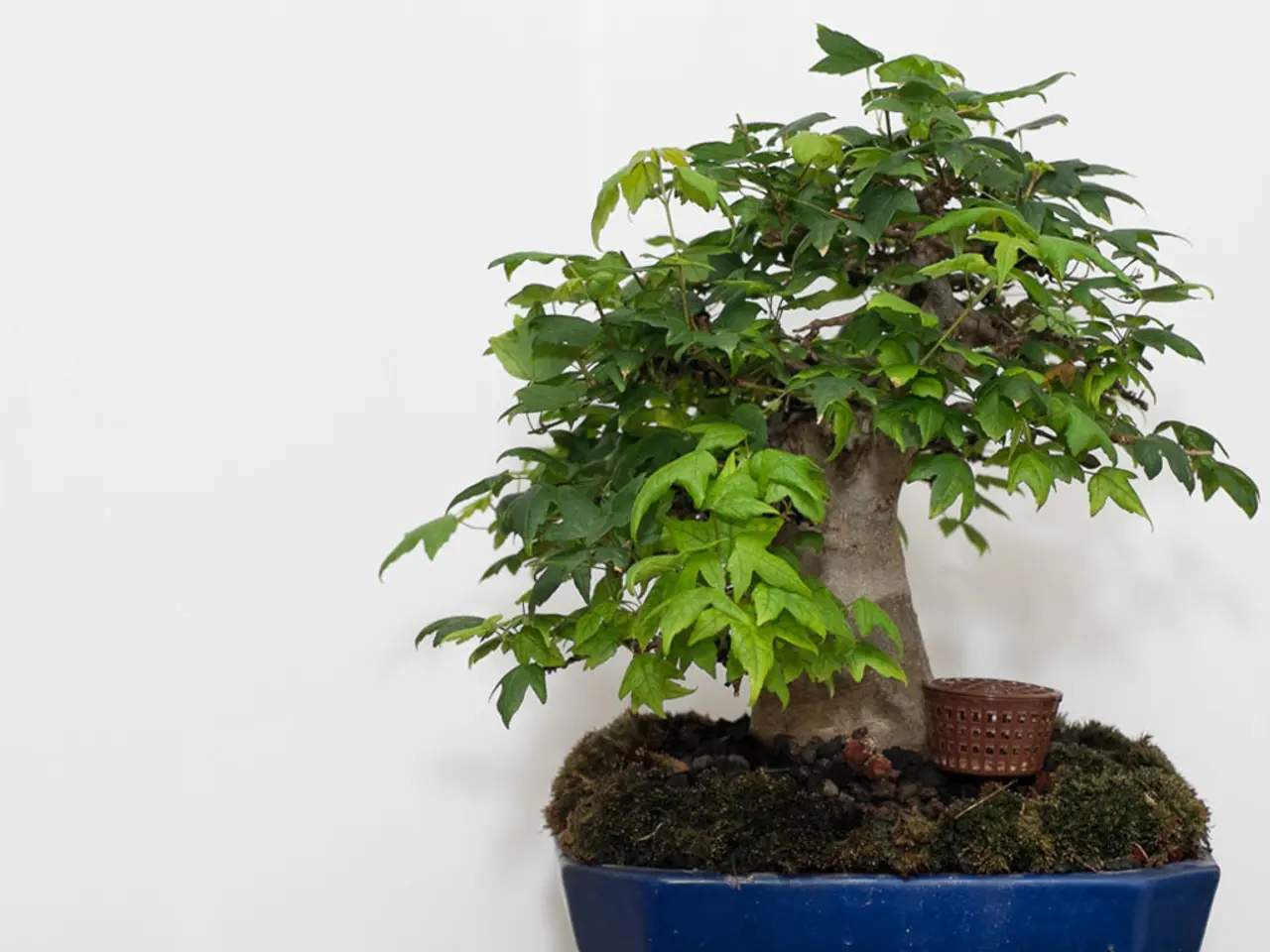Fast-growing Bonsai Maintenance: Preserving Wellness and Aesthetic Appeal through Root Pruning
In the world of bonsai, each species requires a unique approach to maintenance, and fast-growing varieties are no exception. To control growth and promote healthy development, it's essential to understand the specific needs of these vigorous plants.
When it comes to root pruning, a careful and considered approach is key. For fast-growing bonsai, focus on timing, moderate root trimming, water management, and species-specific care.
Timing is crucial. Perform root pruning during repotting, preferably in the tree's dormant season (spring or autumn), aligning with the species' specific growth cycle. This reduces stress and promotes optimal recovery.
Root trimming should be moderate, primarily removing the fine hair roots responsible for nutrient and water absorption. Avoid excessive root loss to prevent shock. Fast growers can recover well if not severely over-pruned.
Water management post-pruning is equally important. Reduce watering immediately after root pruning to encourage new root growth seeking moisture, thereby re-establishing a healthy root system. Only resume normal watering once new root hairs develop.
Pruning and foliage management should also be combined. Remove no more than about 25% of the leaves at a time to prevent excess stress and redirect energy to root recovery and healthy structure development. Prune dead or crossing branches to maintain shape and airflow.
Use appropriate tools and techniques for root pruning. Employ sharp tools like concave cutters for roots and ensure cuts are clean to promote healing. In some species, sealing cuts may speed recovery.
Observe species-specific characteristics when pruning. For example, tropical fast growers like Brazilian Raintree and Jacaranda have their own pruning sensitivities and require warmer conditions for good root recovery. Regular monitoring and adjustments ensure the bonsai's healthy development.
Following root pruning, fast-growing bonsai may require more frequent fertilization to replenish nutrients and support vigorous growth. However, trees struggling with disease or pests may require a more conservative approach to avoid further stress.
Root pruning can be used to correct root-bound bonsai trees, but prevention is still the best medicine. Soil quality substantially influences root pruning decisions, as poor soil can exacerbate vigorous growth, necessitating more frequent pruning. High-quality soil supports balanced development.
When defining desired growth outcomes, consider the tree's size and proportion, branch structure, foliage density, and seasonal characteristics to ensure the bonsai remains aesthetically pleasing throughout the year. The desired growth outcome serves as a guiding principle for pruning decisions, determining the level of restriction or encouragement needed to achieve the ideal bonsai style.
Fast-growing bonsai species like Ficus, Juniper, and Pine require more frequent root pruning to control vigor and maintain a balanced root-to-shoot ratio. When repotting fast-growing bonsai, the tree's aesthetic style should be considered to refine the root structure and reinforce the desired visual balance.
Younger bonsai, typically more vigorous and resilient, can tolerate more aggressive pruning, whereas older trees may require a more gentle approach to prevent shock. During bonsai repotting, the tree's root system is temporarily exposed, allowing for adjustments to be made to the root mass, thereby influencing the tree's overall shape and silhouette.
Moderate growers such as Elm and Beech may require less frequent root pruning, as their growth rates are more moderate. Specialized tools such as root hooks, bonsai root cutters, and root rakes enable precise control, minimizing damage and promoting healthy root development in fast-growing bonsai.
In conclusion, by combining careful timing, moderate root and foliage pruning, adjusted watering, and species-specific care, you can control the vigorous growth of fast-growing bonsai while promoting a healthy, balanced development of both roots and canopy.
- Proper understanding of environmental science, specifically the unique needs of fast-growing plants, is crucial in managing a healthy lifestyle for fast-growing bonsai.
- In the realm of fashion and beauty, one might compare the precision required for root pruning to that of a skilled hairdresser, carefully trimming to promote fashionable growth.
- Just as technology advances today demand gadgets that are sleek and user-friendly, fast-growing bonsai would benefit from home and garden tools that cater to their specific needs, making root pruning an enjoyable, efficient experience.
- The rapid growth of fast-growing bonsai brings to mind an interesting correlation to the increasingly fast-paced nature of technological progress, each requiring careful management and growth strategies to maintain a balanced and healthy development.




